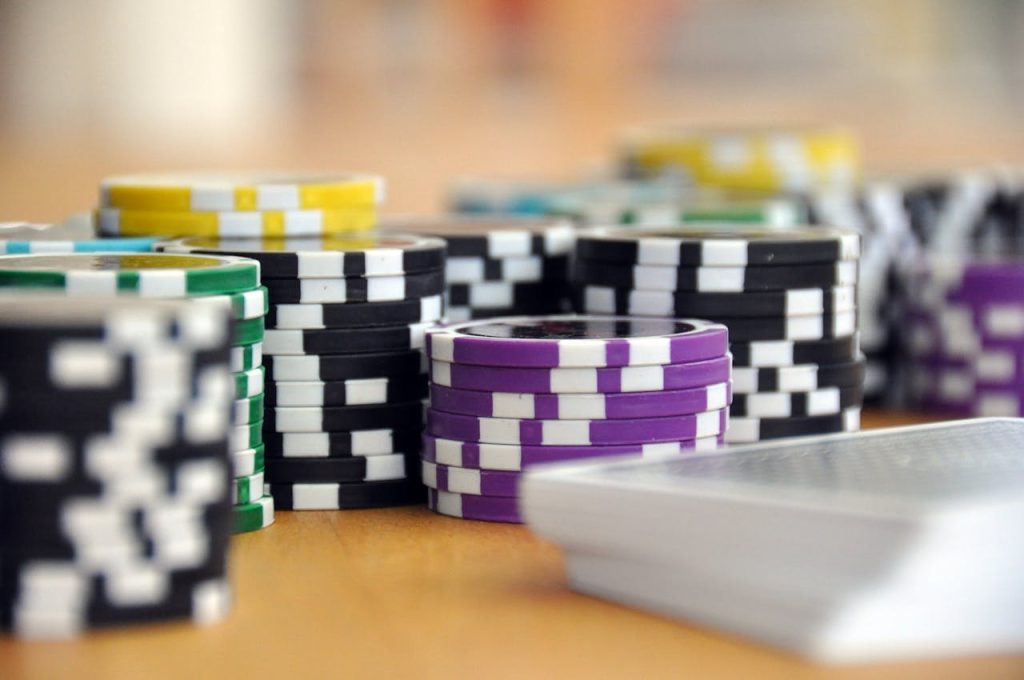Poker is a thrilling game of skill, strategy, and psychology, but its chips play a crucial role in the experience. Understanding poker chips’ different types, values, and materials enhances your overall gameplay, especially when playing different game variations. Here’s everything you need to know about the chip values!
The Purpose of Poker Chips in the Game
Poker chips are currency in poker games, replacing real money for easier betting and tracking. Chips streamline the betting process, making it faster, clearer, and more organized. Without chips, poker games would be cumbersome, creating confusion about bet sizes and total pots.
Chip Denominations and Their Standard Colors
Poker chips come in various denominations, and specific colors represent different values in most games. White chips are often worth $1, red chips typically represent $5, and green chips usually stand for $25. In high-stakes games, black chips are worth $100, purple chips are worth $500, and orange chips are valued at $1,000.
Different Materials Used for Chips
Chips are made from different materials, each offering a distinct weight, feel, and sound. Plastic chips are lightweight and inexpensive and commonly found in casual home games or travel sets. Composite chips feature a mix of materials, creating a mid-range option with a better feel and durability than plastic. Clay chips, the most preferred by serious players, provide a solid weight, a unique texture, and a professional casino-like experience.
How Poker Chip Weight Affects Gameplay

The weight of the chips influences how they stack, shuffle, and feel in your hand. Standard casino chips usually weigh around 10 grams, striking a perfect balance for handling and stacking. Often found in high-end sets, heavier chips provide a satisfying feel but can be harder to shuffle quickly. Lightweight chips, such as those made of plastic, may feel cheap and lack the same satisfying clink when tossed into a pot.
The Importance of a Proper Chip Set
A well-organized poker chip set ensures a smooth, enjoyable game without confusion or delays. A standard set includes enough chips for different denominations to accommodate various betting rounds. For a small home game with four to six players, a 300-chip set is ideal, while larger games require 500 or more chips.
Custom Poker Chips and Personalization Options
Custom chips allow players to add a personal touch, making home games feel more unique. Many companies offer personalized chips featuring logos, initials, or custom artwork for a one-of-a-kind experience. High-end casinos and private clubs also use custom-designed chips with security features to prevent counterfeiting and enhance authenticity.
Poker Chip Etiquette: Handling and Stacking Like a Pro
Proper poker chip etiquette keeps the game flowing smoothly and maintains a professional atmosphere at the table. Players should avoid splashing the pot, which means tossing chips carelessly and making bet amounts unclear. Stacking chips neatly helps the dealer and other players quickly assess stack sizes, reducing confusion. Shuffling chips, a common habit among experienced players, is acceptable but should be done respectfully to avoid distracting others.
Final Thoughts
Choosing the right poker chips enhances the overall poker experience, whether you’re playing at home or in a casino. From material selection to proper stacking etiquette, poker chips are more than just playing pieces—they define the atmosphere and style of every game. Invest in a quality set, learn chip values, and elevate your poker nights to a whole new level!



